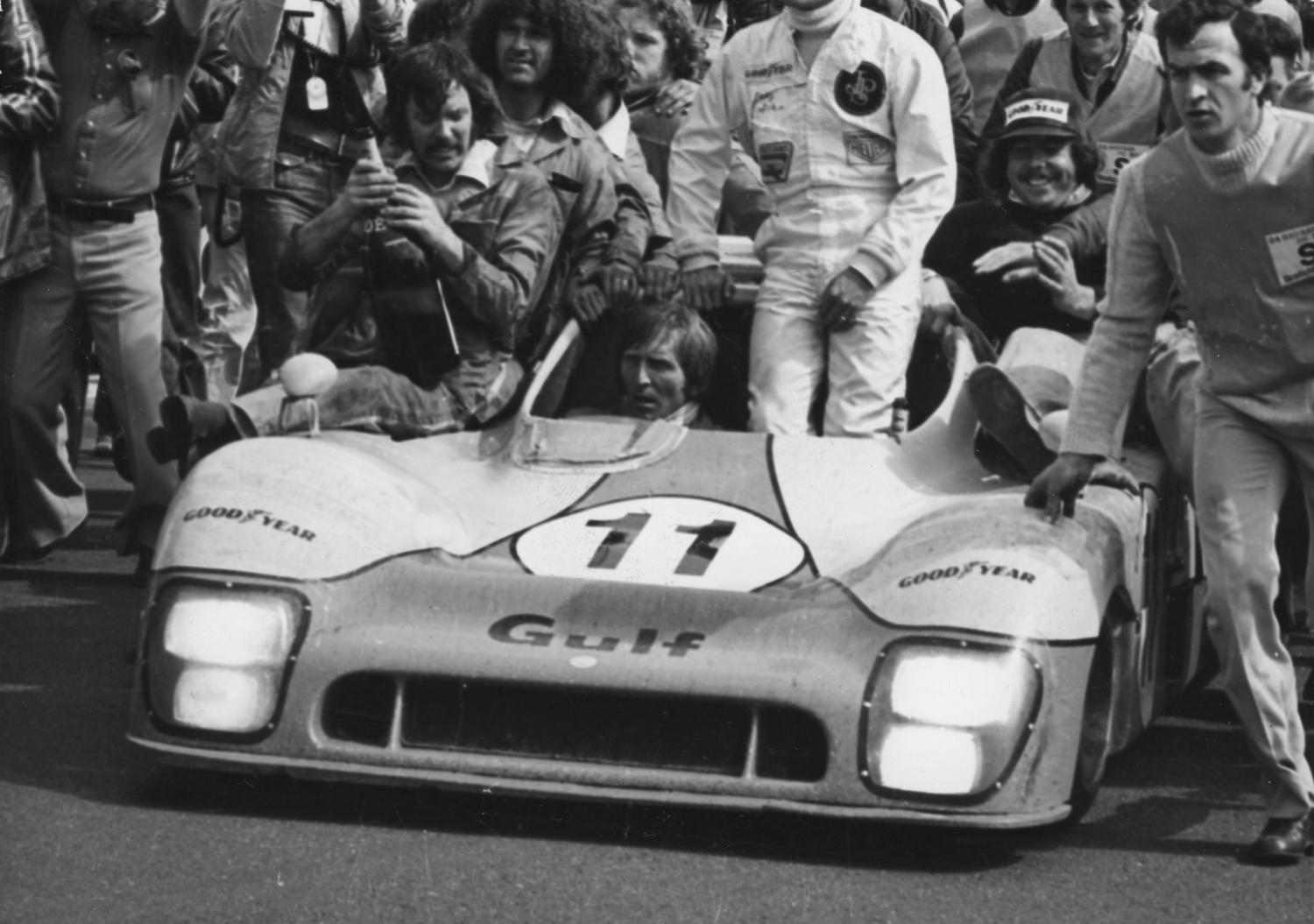After the Ford GT40's wins (1968-1969) and the Porsche 917's records (1970-1971) at the 24 Hours of Le Mans, 3-liter prototype technical regulations led John Wyer and the Gulf team back to Mirage chassis, a replay of their first joint appearance at Le Mans in 1967.
It was a new start for the team, under the name of Gulf Research. At its helm was John Horsman, the man who had made the Porsche 917 K the one to beat in 1970 and 1971, though John Wyer - at the time 63 years of age - was still in the mix.
British engineer Len Bailey designed the Mirage M6, powered by the Ford-Cosworth 3-liter V8 engine that had dominated Formula 1 since 1968. But after a difficult debut, the team bowed out of the 1972 24 Hours. Gulf then made its return to Le Mans in 1973, but both M6s were forced to retire.
In 1974, the Mirage M6 was renamed the Gulf GR7. After its main rival Ferrari decided to concentrate its efforts in Formula 1, Matra dominated the 24 Hours and won a third consecutive victory. While the French constructor claimed the top and third steps on the podium, the GR7 driven by British duo Derek Bell-Mike Hailwood finished fourth.
In 1975, the retirement of Gulf Vice President Grady Davis, who had first involved the oil company in endurance racing in 1967, caused a drastic reduction in the budget for competition, at a time when the world was still reeling from the oil crisis of 1973. Yet, John Wyer and John Horsman managed to convince Gulf to fund the entry of two cars in the 24 Hours of Le Mans. It turned out to be an excellent swan song for Gulf Research.
Matra left to prepare to participate in Formula 1 with Ligier, while Renault-Alpine and Alfa Romeo, duelists in the 1975 World Marques Championship, passed on the 24 Hours. The two new Gulf GR8 prototypes, still powered by the Ford-Cosworth V8, reached the podium at Le Mans. Teammates for the first time at the 24 Hours, Jacky Ickx and Derek Bell won the first of their three shared victories. "Jacky is probably the best teammate I've ever had," says Derek Bell today. "When I'd get back in the car, it was just how I'd left it. I've always greatly admired and enormously respected him."
The Belgian and the Brit were joined on the podium by their teammates Vern Schuppan and Jean-Pierre Jaussaud (third). From 1968 to 1975, eight 24 Hours of Le Mans winners wore Gulf's sky blue and orange: Richard Attwood, Derek Bell, Lucien Bianchi, Jacky Ickx, Jean-Pierre Jaussaud, Jackie Oliver, Pedro Rodriguez and Vern Schuppan. They have 18 Le Mans victories between them.
Gulf has been a presence at Le Mans many times over the last two decades, thanks namely to Sir Lindsay Owen-Jones - current President of the Endurance Commission of the Fédération Internationale de l'Automobile - and also to Aston Martin Racing, with one class win at the 2008 24 Hours of Le Mans. But the years 1967-1975 remain the pioneer era, the one that made the sky blue and orange livery legendary.
Click below for previous installments in this series:
Gulf 1967-1975 (1) - The Ford GT40 years
Gulf 1967-1975 (2) - The Porsche 917 years
Photo: Winner at the 1975 24 Hours of Le Mans, the Gulf-Ford GR8 driven by Derek Bell (at the wheel) and Jacky Ickx (standing in the cockpit next to Bell) is currently on display at the Ford stand at the 87th Geneva Motor Show (closing Sunday, March 19th).

